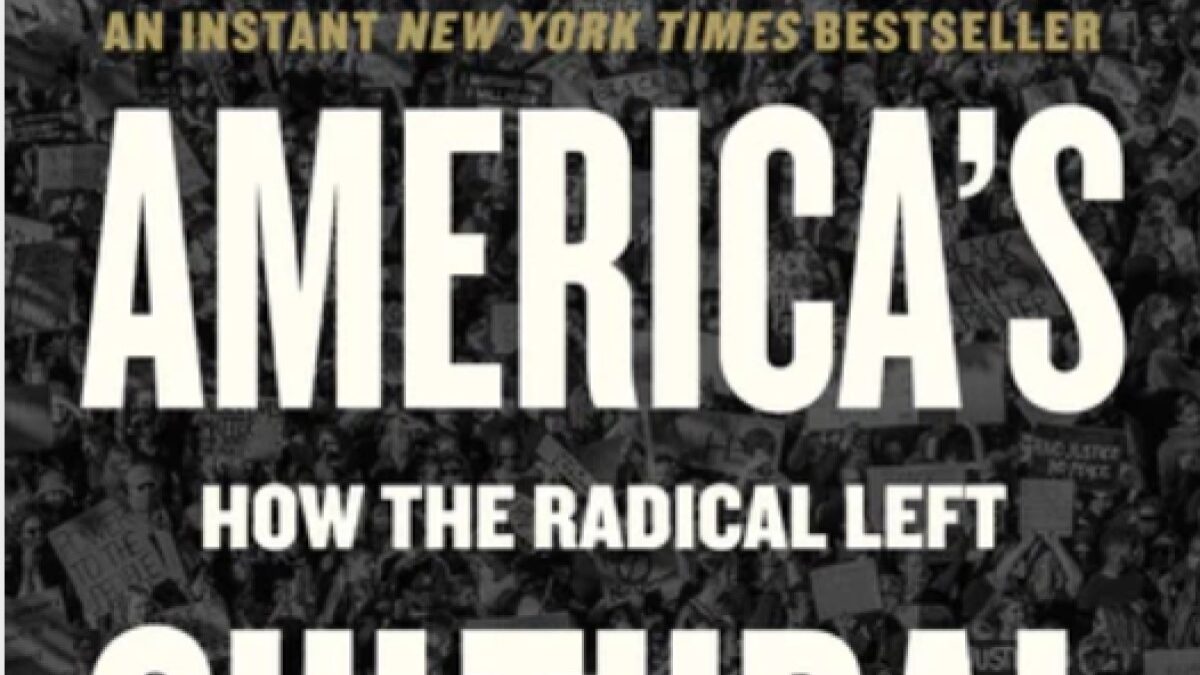Ten years ago, claiming the United States was experiencing a cultural revolution would have met eyerolls and jeers. Now, it’s even obvious to normies. Perhaps no journalist has covered the rising iceberg tips of this phenomenon better than Christopher F. Rufo, a City Journal contributing editor and documentary filmmaker.
In America’s Cultural Revolution, out in July, Rufo connects the seemingly sudden wave of leftist extremism in the United States with its antecedents in Marxist philosophy and practice. He shows that today’s mass, often-silent censorship of public discourse combined with riots and antipathy toward police and prisons are not random accidents, but part of a cohesive political program concocted decades ago by successful communist true believers.
This is an important thing to demonstrate because comforting slogans have lulled many Americans, including many on the political right, into willful blindness to the mass infiltration of our own institutions by communist ideology and adherents. These include: “Fight them over there so we don’t have to fight them over here,” “the Cold War is over,” and “Communism’s main threat to the United States is from potential military action from Red China.”
Many politicians, especially on the right, bluster about protecting the United States from Red China, both militarily and economically. Most of those same politicians are entirely silent about communist infiltration into U.S. institutions as everyday and deeply influential as public schools and workplaces.
There’s no way, for example, the majority of current Senate Republicans would support defunding Marxist outposts far more threatening to the United States than China’s soft-power Confucious Institutes: diversity, equity, and inclusion bureaucracies, including in higher education. As the Supreme Court noted in Bostock v. Clayton County, more than 100 federal laws are now being used as excuses to foist Marxist-driven DEI policies into every corner of American society.
It’s impossible to know whether most lawmakers who could end this subversion of American freedoms are complicit or stooges. Considering that, as Rufo shows, cultural Marxists believe in their intellectual father Herbert Marcuse’s policy of repressing not just speech but even thoughts that oppose their ideology, perhaps instead the issue is that their minds are captive to America’s enemies. Regardless, voters and those they elect can no longer ignore the proof of this mass subversion that Rufo’s book puts into the public eye.
The truth is, the Cold War abroad may have ended, but our own cold war continues and accelerates. The United States is indeed engaged in an internal struggle. Anyone who denies that is, quite simply, accidentally or willingly working for the enemy.
Marxists Take America’s Commanding Heights
Rufo grounds this reality with deep readings of American cultural Marxists. In their own words, he shows, they desire to overthrow the American constitutional order. Identity politics is the core strategy around which they’ve most recently converged.
One of Rufo’s top examples of this is Marxist academic and race hustler Angela Davis: “Davis, according to Marcuse, had taken the critical theorists to their logical conclusion: violent resistance against the state,” Rufo notes (74).
After being acquitted of assisting in a jailbreak and judge assassination for which she bought weapons in 1970, Davis burrowed into academia, mentoring an entire generation of disciples who colonized the academy with Marxist ideology. She later emerged as the evil godmother of the massive 2020 Black Lives Matter riots.
“Davis was one of the first to argue that the fight against oppression must include the fight against racism, patriarchy, and capitalism,” Rufo notes (102). “‘The Socialist movement must never forget that while the economic struggle is indispensable, it is by no means the sole terrain of significant anti-capitalist activity,’ she wrote during her incarceration. The movement must obliterate the entire superstructure that holds the system in place, particularly the architecture of racism and the ‘family-based structure of oppression.’ … By dissolving the social bonds that sustain the mode of production, she believed, the revolutionary could begin to undermine the entire capitalist society.”
Groundhog Day for the 1960s
America’s Cultural Revolution is written in four parts. Rufo starts with the origins of critical theory among avowedly Marxist intellectuals, then documents how it explicitly motivated anti-American violence from 1960s race riots, ambushes of police, and bank robberies to today’s George Floyd riots and ongoing Antifa violence in Portland (and anywhere else kinetic action would be useful to Democrat Party goals).
He shows that after their street violence didn’t inspire the large-scale revolution among America’s lower class they expected in the 1960s and ’70s, American communists chose another strategy: working into American centers of cultural influence, especially education and media. The Marxists switched from economic class warfare to cultural warfare.
“The strategy was less violence; more manipulation,” summarizes Charles Haywood in his review of the book.
Critical theory’s nihilism didn’t stay in universities, as the blind hoped for many years. From universities’ control over knowledge-class job entry, cultural Marxism radiated out to K-12 schools, business, bureaucracy, and media.
As everyone is by now aware, installing “freaks” and “madmen” in universities had trickle-down effects into public schools, where DEI Marxism is the dominant ethics teaching. “As the Heritage Foundation discovered, 79 percent of school districts with more than 100,000 students have hired a ‘chief diversity officer’ and implemented university-style ‘diversity, equity, and inclusion’ programming,” Rufo notes (167).
Every Fortune 100 company has adopted DEI practices as well, making at least lip service to Marxist religions an essentially inescapable requirement for academic and professional advancement in the United States.
Shifting major media by indoctrinating their employees in identity politics at university also massively boosted the New Left Marxists’ control of public discourse. The New York Times, Rufo notes, “penetrates the consciousness of 100 million readers, plus immense secondary audiences on television, radio, and social media. If the university provided the theory of the revolution, the paper provided the mechanism for transmission. … As the Times changed, the other primary channels of left-learning media followed suit: the Washington Post, NPR, MSNBC — even the wire services — all converged on the framing and language of the New Left” (57).
Recent revelations of government censorship choking the spread of reporting from New York Times competitors only amplify this cultural hegemony of Marxist messaging.
1776 Versus 1965
The book’s last chapter, titled “The Counter-Revolution to Come,” is a little disappointing, as it talks broadly about forming a counterrevolutionary force but with few specifics. Perhaps Rufo expects enough readers will be aware of his policy work elsewhere that has included detailed specifics, including ways to root out critical race theory within states, versions of which 22 states have so far adopted. I’ve also suggested several.
One of Rufo’s best points in this closing is a perennial one against leftism, which has now gone through at least three waves of patent failure yet keeps being reinvented and tried again. “[T]he ideology of the elite has not demonstrated any capacity to solve the problems of the masses, even on its own terms,” he writes. “The critical theories operate by pure negation, demolishing middle-class structures and stripping down middle-class values, which serves the interest of the bureaucracy but leaves the society in a state of permanent disintegration” (273).
Dispositionally, Rufo seems a sunny man, at least to judge by his Twitter and articles. That’s good because people need hope. We need to believe this evil empire of bureaucracy will someday fall and that we can help make it happen. However, there’s another side of history, in which sometimes the fall of great evils takes a very long time and causes a very large amount of pain.
“The governing institutions in Portland have reached the strange paradox in which the state, through the organs of education, is agitating for its own destruction,” he notes. “They have condemned the entire structure of the social order and celebrated the figures who would tear it down. They might get what they wish for, although not in the way they imagine,” Rufo writes (201).
If it can happen in Portland, it can happen elsewhere too. It’s not a sure thing that people will look at Portland and decide to walk the other way. Americans are not genetically immune to the part of human nature that sees utopian self-immolation and throws itself into the flames.
That’s why those who are capable of seeing must understand exactly where these evil ideologies lead and join to fight for our right to live in peace under our traditional constitutional order. America’s Cultural Revolution makes it very clear.









